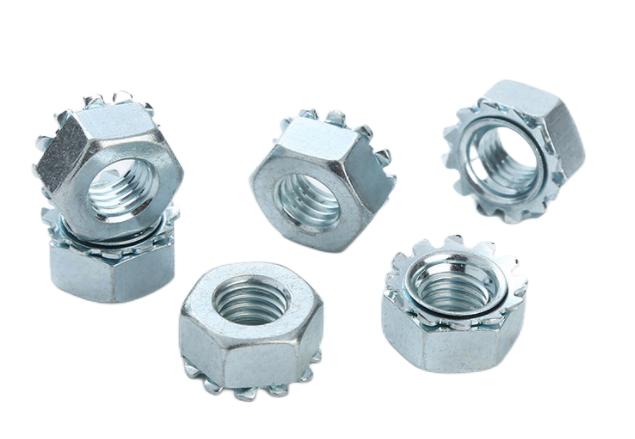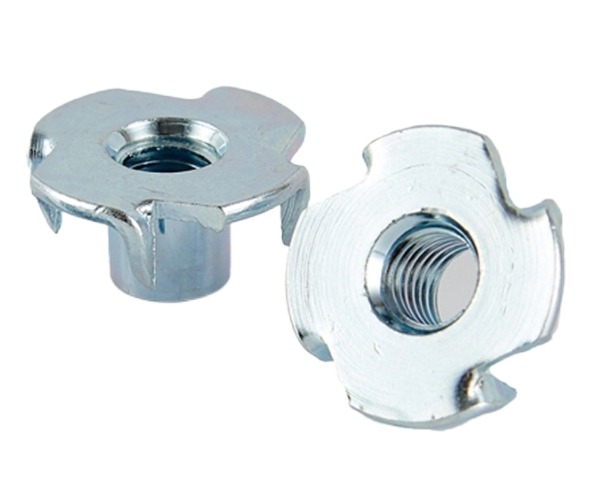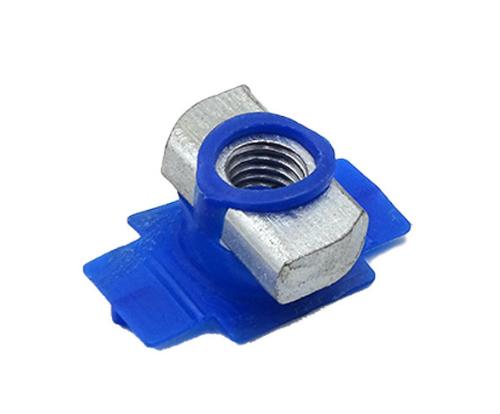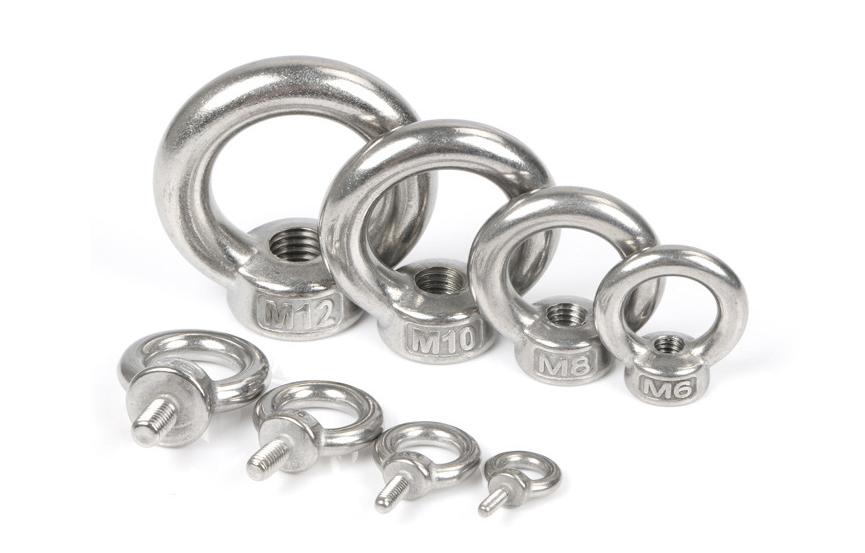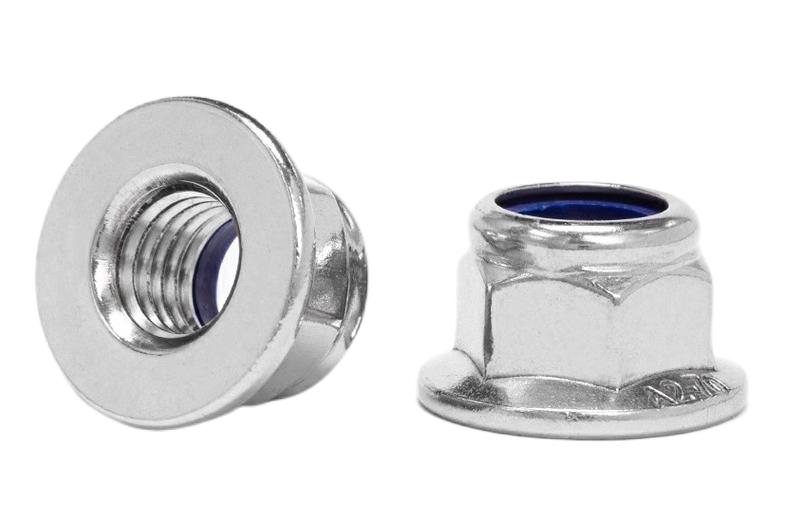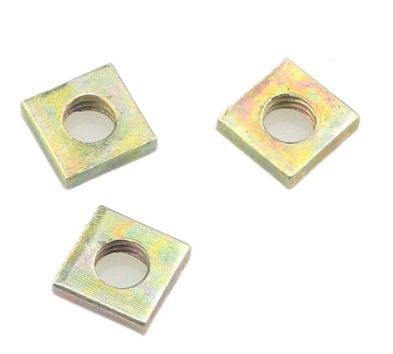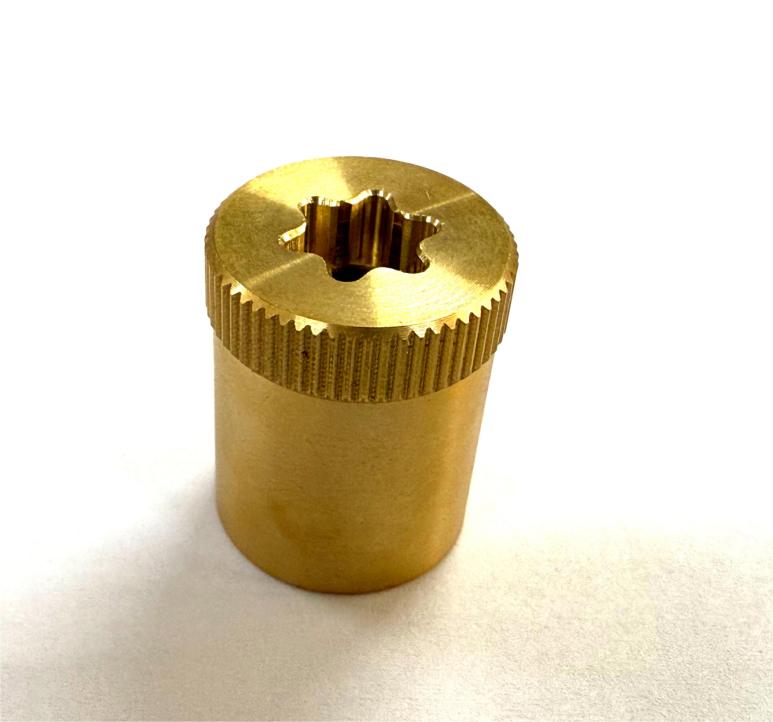How Are Weld Nuts Manufactured?
Weld nuts play a crucial role in various industries, providing a fastening solution for materials that cannot be easily accessed from the backside. Understanding how weld nuts are manufactured sheds light on their quality, reliability, and suitability for different applications. In this article, we delve into the intricacies of weld nut manufacturing, exploring the types, raw materials, and manufacturing process, and concluding with their significance in modern industrial practices.
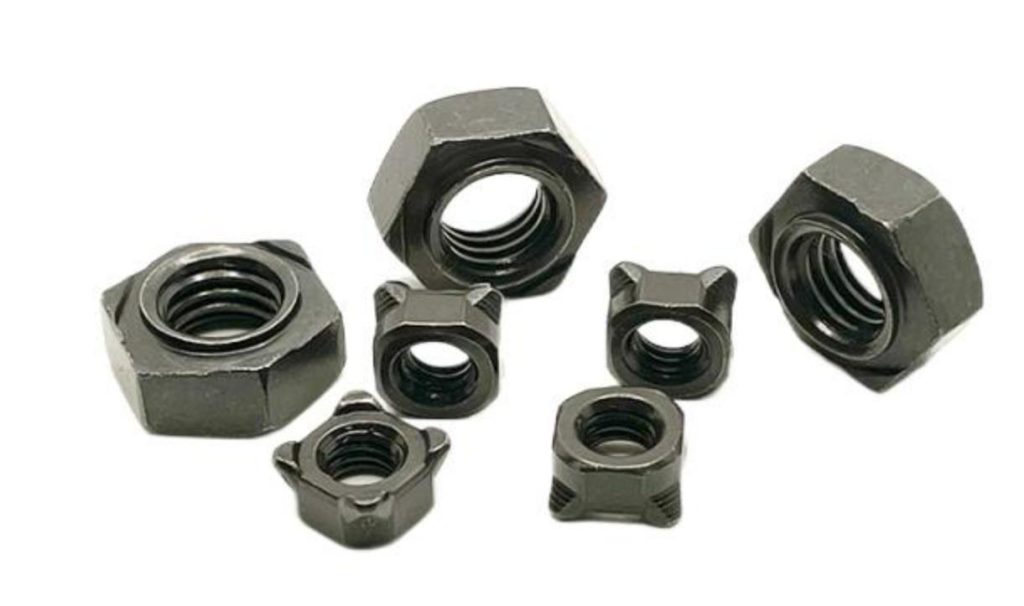
Types of Weld Nuts
Weld nuts can be classified based on various factors such as their design, shape and size. Here are some common classifications of weld nuts:
From Design:
- Projection Weld Nuts: These weld nuts have a raised boss or projection that provides a larger weld area, increasing the strength of the weld joint.
- Spot Weld Nuts: Spot weld nuts have a flat or slightly raised surface and are designed to be welded at specific points, usually by resistance welding.
- Pilot Projection Weld Nuts: Similar to projection weld nuts, these have a smaller boss or projection, often used for lighter-duty applications.
From Shape and Size:
- Round Weld Nuts:
Round weld nuts have a circular shape with a flat or slightly domed top surface.
They are versatile and can be used in various applications where orientation is not critical.
- Rectangular Weld Nuts:
Rectangular weld nuts have a flat shape with straight edges.
They are often used in applications where precise alignment and orientation are important, as the straight edges facilitate accurate positioning during welding.
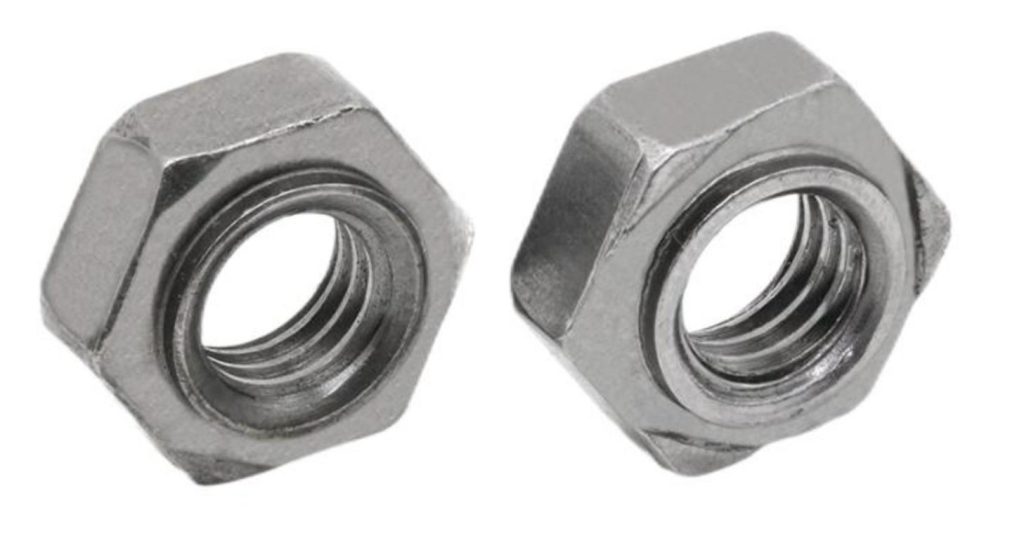
Hexagonal weld nuts have a hexagonal (six-sided) shape, similar to standard hex nuts.
The hexagonal shape provides multiple flat surfaces, allowing for easy tightening with a wrench or socket.
They are commonly used in applications where high torque is required or where space constraints limit the use of round or rectangular weld nuts.
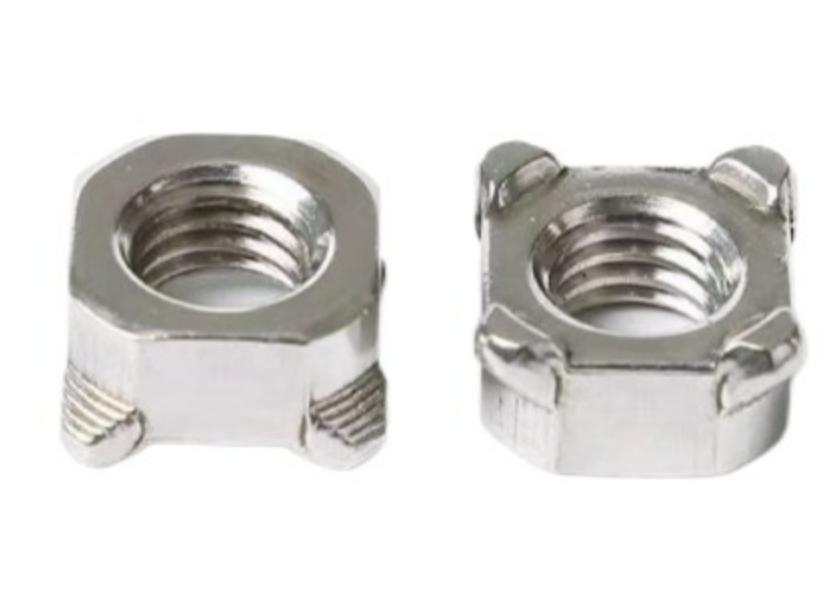
Square weld nuts have a square shape with four equal sides and right angles.
They are suitable for applications where a square profile is preferred or where space constraints dictate a specific shape.
- Oblong Weld Nuts:
Oblong weld nuts have an elongated or rectangular shape with rounded or chamfered corners.
They are often used in applications where a larger weld area is required or where a rectangular profile fits better than a square or round one.
- Tapered Weld Nuts:
Tapered weld nuts have a conical or tapered shape, with a wider base that gradually narrows towards the top.
They are designed to fit into tapered or countersunk holes, providing a flush mounting surface after welding.
- Tubular Weld Nuts:
Tubular weld nuts have a cylindrical shape with a hollow interior.
They are commonly used in applications where a threaded insert is needed for blind fastening or where a lightweight yet strong fastening solution is required.
These different shapes of weld nuts offer versatility and flexibility in design and application, allowing engineers and designers to choose the most appropriate type for their specific requirements. If you want to customize the weld nut, please feel free to contact KENENG, they can provide you excellent custom service for all the fasteners.
Raw Materials Used in Weld Nut Manufacturing
The raw materials used in weld nut manufacturing play a crucial role in determining the quality, strength, and durability of the final product. Here are the common raw materials utilized in weld nut manufacturing:
Steel:
- Carbon steel is one of the most commonly used materials for welded nuts due to its excellent strength and weldability.
- Low carbon steel (mild steel) is suitable for general-purpose applications, while high carbon steel offers increased hardness and wear resistance.
- Alloy steel, which contains additional alloying elements such as chromium, nickel, or molybdenum, provides enhanced strength and corrosion resistance.
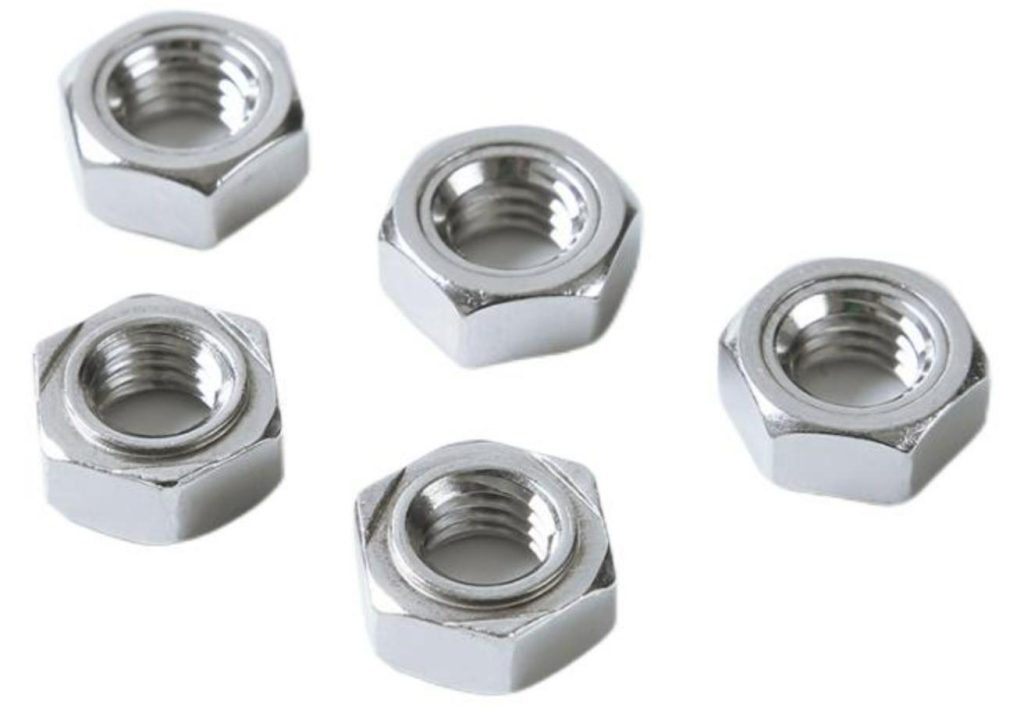
Stainless Steel:
- Stainless steel weld nuts are highly resistant to corrosion, making them ideal for applications in corrosive environments or where sanitation is critical.
- Austenitic stainless steel grades such as 304 (18-8 stainless) and 316 offer excellent corrosion resistance and are commonly used in marine, food processing, and pharmaceutical industries.
Aluminum:
- Aluminum weld nuts are lightweight and corrosion-resistant, making them suitable for applications where weight reduction and durability are important.
- Aluminum alloys such as 6061 and 7075 are commonly used in weld nut manufacturing due to their high strength-to-weight ratio and weldability.
Brass:
- Brass weld nuts offer good corrosion resistance, electrical conductivity, and aesthetic appeal.
- They are often used in decorative or architectural applications where appearance is important, as well as in electrical and plumbing fixtures.
Copper:
- Copper weld nuts provide excellent electrical conductivity and thermal conductivity.
- They are commonly used in electrical and electronic applications, such as grounding connections and electrical panels.
Titanium:
- Titanium weld nuts offer high strength-to-weight ratio, corrosion resistance, and biocompatibility.
- They are used in aerospace, medical, and automotive industries where lightweight yet strong fastening solutions are required.
Other Specialty Materials:
In addition to the above materials, weld nuts can also be manufactured from specialty materials such as nickel alloys, Inconel, Monel, and titanium alloys for specific applications that require high temperature resistance, chemical resistance, or unique mechanical properties.
The selection of raw materials depends on factors such as the application requirements, environmental conditions, budget constraints, and regulatory compliance. Manufacturers carefully choose the appropriate material grade and composition to ensure that welded nuts meet the desired performance standards and specifications.
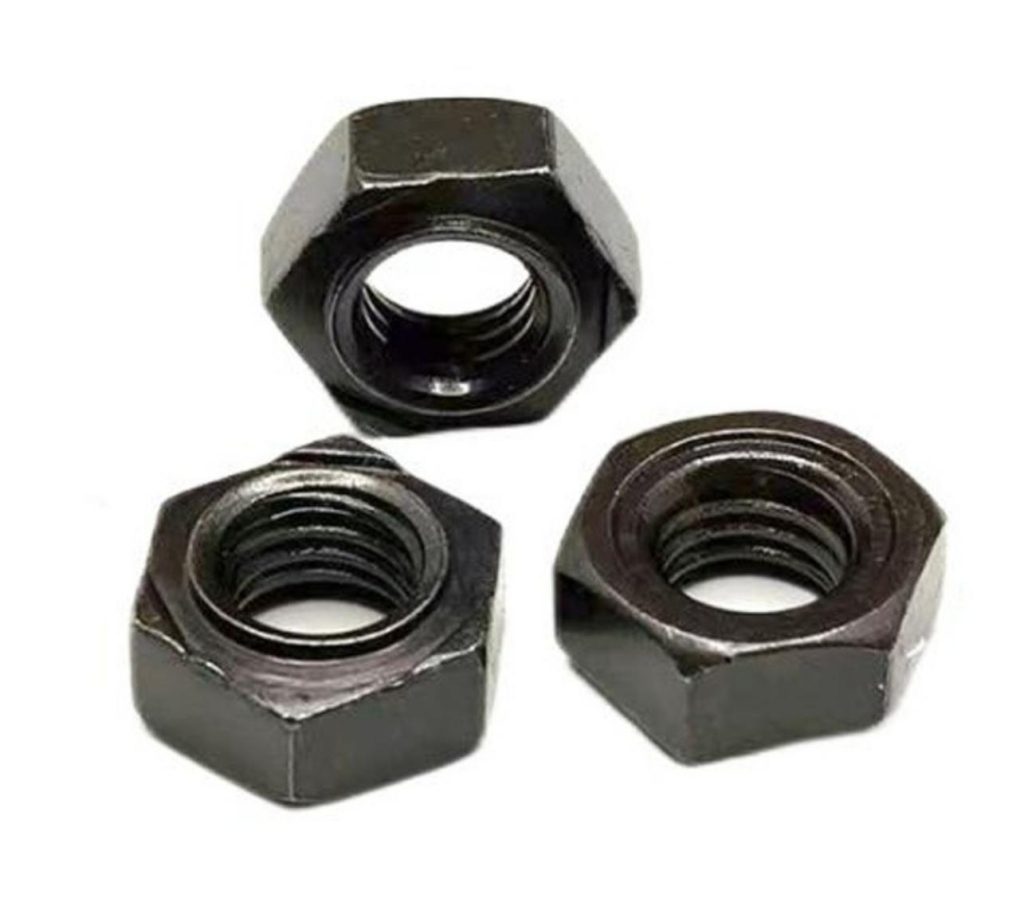
Weld Nut Manufacturing Process
The manufacturing process of weld nuts involves several steps to transform raw materials into finished products ready for use in various applications. Here is an overview of the typical weld nut manufacturing process:
1. Material Preparation:
The manufacturing process begins with the preparation of raw materials. Raw metal stock, typically in the form of sheets or coils, is selected based on the desired material type, thickness, and dimensions.
The raw material is then cut or sheared into blanks of the appropriate size and shape for the specific type of weld nut being produced.
2. Forming and Shaping:
The blank undergoes forming and shaping processes to achieve the desired geometry and features of the weld nut.
Forming operations may include cold forging, hot forging, or stamping, depending on the material properties and complexity of the weld nut design.
Shaping operations such as bending, punching, and threading are performed to create the necessary contours, threads, and other features of the weld nut.
3. Welding Process:
Once the blank is formed and shaped, it undergoes the welding process to attach it to the base material.
The welding method used depends on the type of weld nut being manufactured. Common welding techniques include projection welding, spot welding, resistance welding, and stud welding.
During welding, the weld nut is positioned and secured onto the base material, and an electrical current is passed through the joint to create a strong, permanent bond between the weld nut and the workpiece.
Welding parameters such as current, voltage, and duration are carefully controlled to ensure proper fusion and quality of the weld joint.
4. Inspection and Quality Control:
After welding, the weld nuts undergo inspection and quality control to verify that they meet specified tolerances and performance requirements.
Dimensional checks are performed to ensure that the weld nuts conform to the specified dimensions, including thread size, diameter, height, and overall geometry.
Strength and integrity tests may be conducted to evaluate the weld joint’s mechanical properties, such as tensile strength, shear strength, and resistance to deformation.
Surface finish inspection ensures that the weld nuts meet the required surface finish and appearance standards.
5. Finishing and Coating (Optional):
Depending on the application requirements, weld nuts may undergo additional finishing processes such as deburring, polishing, or surface treatment to improve their appearance and functionality.
Protective coatings or finishes, such as zinc plating, galvanizing, or black oxide coating, may be applied to enhance corrosion resistance and durability.
6. Packaging and Shipping:
Once the weld nuts pass inspection and quality control, they are packaged according to customer specifications and shipped to their destination for use in various industrial applications.
Throughout the manufacturing process, strict adherence to quality standards and continuous monitoring of production parameters ensure that weld nuts meet the required specifications and performance criteria. Advanced manufacturing technologies and automation systems may be employed to enhance efficiency, precision, and consistency in weld nut production.
Conclusion
The manufacturing of weld nuts is a precise and intricate process that involves careful selection of materials, advanced fabrication techniques, and rigorous quality control measures. By understanding the manufacturing process of weld nuts, engineers and designers can make informed decisions when selecting fastening solutions for their projects. Ultimately, weld nuts play a vital role in ensuring the structural integrity and reliability of assemblies across various industries, making them indispensable components in modern manufacturing practices.

